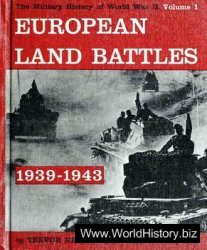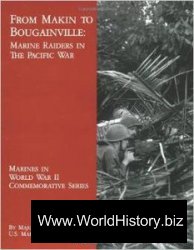Nazi Germany’s principal ally during the Second
World War was Benito Mussolini’s fascist Italy.
There had been much destruction, particularly of
housing, as the Allied armies pushed up the
Italian peninsula after their landings in the south,
but the country’s industrial north-east region,
where the Germans surrendered without severe
fighting taking place, would allow Italian industry
to recover quickly. Agriculture too could be
brought back to normal within one or, at most,
two seasons. The immediate dislocation caused
by the war was, nevertheless, enormous. Even
though most Italian cities, unlike Germany’s, had
not been turned into rubble heaps, the standard
of living of most Italians had dropped to subsistence
level and below. Communications and
infrastructure had to be rebuilt. Relief from
abroad was essential if the poorest Italian families
were not to starve, and it came principally from
the US. In 1945 Italy was producing less than
half of what had been its gross national product
in 1938, yet three years after the end of the war
the Italian economy had already caught up with
pre-war levels.
In many respects the Italians were in a more
fortunate position than the Germans at the end
of the war. Italy was not divided; it was occupied
and in reality under the control of the Western
Allies alone. The Allied perception of Italians,
reinforced by the way the war came to an end in
Italy, was far more favourable than their perception
of the Germans. At about the same time in
the autumn of 1944 as the Morgenthau Plan of
pastoralisation and minimal living standards was
being regarded as appropriate treatment for the
Germans, Britain and the US promised to help
Italy recover from the wounds of war. Why the
great difference? Mussolini had presided over a
vicious puppet regime in northern Italy while the
Allies in 1944 were slowly battling up the Italian
peninsula. But the fighting had not been left to
the Allies alone. A powerful anti-fascist partisan
movement had attacked and harried the German
troops and the Italian fascist militia. In this way
the Italians had actively assisted in the liberation
of their country. The Germans had fought for
Hitler’s Germany to the end.
The Allies had looked upon the fascists with
contempt rather than hatred during the war. The
Italian fascists, moreover, had not committed
atrocities on the terrible scale of the Germans.
Although Mussolini’s regime was increasingly
ready to accept German dictation, the Italian
army high command during the Second World
War had not become as depraved as much of the
Wehrmacht leadership did; Italian generals had
even shown resistance to criminal orders. The
Italian people had tired of the war and genuinely
welcomed the British and American troops as liberators.
The cause of Italy was also assisted by the
presence in the US of a large Italian-American
community whose members had not lost their
love for their homeland: Roosevelt wanted to
secure their support in the presidential election of
1944. Most importantly, the Italians themselves
had overthrown Mussolini when the Fascist
Grand Council and the king had dismissed him.
The Allies were prepared to deal with his successor,
Marshal Pietro Badoglio, even though he was
the brutal conqueror of Abyssinia; what mattered
most to them was that he was prepared to take
Italy out of the war. The Italians were thus
allowed by the Western Allies to change sides and
become ‘co-belligerents’ – not exactly allies, but
not enemies either.
Italy had achieved something remarkable.
Without a revolution the old fascist establishment
and the monarchy had transformed their fascist
rule to one acceptable to the Allies. To all intents
and purposes they had escaped the consequences
of the Allied demand for ‘unconditional surrender’.
As far as Italy was concerned, the needs of
war overrode other considerations in Allied counsels.
For Churchill and the British, Badoglio and
the monarchy represented the best bulwark
against communism.
The southern half of Italy had always been predominantly
conservative and royalist. With the
Allied armies in the south and the Germans in the
north, Italy was, in 1944, more physically split
than ever. In central and northern Italy a coalition
of anti-fascist parties was formed in September
1944 embracing all anti-fascists from the Liberals
to Catholic Christian Democrats and from the
socialists to the communists. Calling themselves
the Committee of National Liberation, they
demanded war against the German occupiers. By
contrast, the king and his government, who had
earned the contempt of many Italians by fleeing
south to safety behind the Allied lines, seemed
paralysed and hesitant. The Committee of
National Liberation filled the vacuum and acted
decisively, despite the German occupation of central
and northern Italy. For this reason it became
the effective political authority in Italy in 1945.
With 250,000 armed partisans, a fierce war was
fought in the north against the well-armed
German divisions. The partisans suffered heavy
casualties in 1944 and 1945 but succeeded in liberating
Milan and Italy’s other northern cities
even before Allied troops advancing from the
south could reach them. Mussolini’s puppet
regime in the north collapsed and he tried to flee.
He was captured by partisans and executed
together with his mistress. Their bodies were then
exposed to the savagery of public vengeance. The
newsreels that showed these horrible scenes,
though they shocked many in the West, provided
a glimpse of the passions the war had aroused.
Why then did the communists not seek to
exploit their organisational strength among the
partisans of the centre and north and their military
success in sweeping through the Po Valley
during the spring of 1945, ‘the wind from the
north’, to try to hold on to effective power?
Palmiro Togliatti, the communist leader, a cool
and calculating politician, had left Moscow and
reached southern Italy a year earlier, in March
1944. He had immediately declared that the communists
would collaborate with the royal government
and anti-fascist parties and he did not waver
from this course. It is probable that the strategy
had been coordinated in Moscow. The similarity
with the attitude of the French communists is
striking. Stalin was anxious to maintain Allied
unity until the war was won, and indeed after; he
had pressed for spheres of influence in the Europe
overrun by the Allied armies and he now tried to
demonstrate to the Western Allies that the communists
in the sphere he accepted as Western
would not be allowed to cause any trouble.
Realism, so Stalin believed, dictated that the
Western Allies, whose armies would conquer the
whole of Italy, would also decide future politics
in Italy. The Soviet recognition of Badoglio’s
royal government in the south in March 1944
sent this signal clearly. Stalin, of course, was also
anxious, as an obvious quid pro quo, to have the
Western Allies accept Soviet dominance in
Eastern and central Europe. Moscow, therefore,
urged the communist parties of the West to
follow popular-front tactics, to bide their time
and to gain strength by working constitutionally
within the system.
Togliatti too was committed to a policy of
caution. An insurrection now would only have
been crushed by the Allies; the path of legality,
on the other hand, guaranteed the survival of the
Communist Party, particularly when it was com-
bined with the call that all Italians should unite
to defeat fascism and the Germans. Togliatti’s
aims were long-term, to rally the Italian masses to
an Italian Marxist line after the war, to establish
what he enigmatically called ‘progressive democracy’.
The inevitable drawback of his policies was
that by supporting the royal government he also
strengthened the anti-communist forces which, as
it turned out, have dominated Italian politics ever
since 1945.
The party in greatest difficulty after the war
was the ‘other party’ of the left, the socialists.
Should it be ready now to unite the left, to gain
a majority in the country and to collaborate with
the communists? It was led by Pietro Nenni, a
warm and popular ‘man of the people’ who
believed that it was the disunity of the working
class that had allowed Mussolini and the fascists
to gain and retain power. Hence his decision after
1945 to urge close collaboration with the
Communist Party. This policy eventually split the
party in 1947, a majority following Nenni; a
minority under Giuseppe Saragat distrusted
Moscow and the communists, left the party on
this issue and formed their own party, the Social
Democrats.
The Christian Democrats were to play the decisive
role in post-war Italian politics. The principal
aim of the party was to re-establish the constitutional
parliamentary state of the pre-fascist era.
Fervour for reform varied among party members,
those on the left being the keenest. But the
Christian Democrats enjoyed one large electoral
advantage: the full backing of the Vatican. The
leader of the party, who dominated Italian politics
in the immediate post-war years was Alcide
De Gasperi, a practising Catholic. Although not
solely a Catholic party, the Christian Democrats
depended on the support of the Church for their
electoral success. Yet De Gasperi was no mere captive
of the Church. Despite Vatican disapproval he
was ready to work with the communists in the
National Liberation Council during the war and
he encouraged communist participation in the
post-war coalition governments until 1947. It
served the interests of the governments he led
after December 1945 not to drive the communists
immediately into opposition.
In post-war Italy the Church resumed its enormous
influence over the lives of believers, the
Vatican and priests backing from their pulpits the
Christian Democrats against the godless communists.
The Christian Democrats succeeded in
attracting by far the largest support of any one
party. However, the alliance of Togliatti’s communists
and of Nenni’s Socialist Party, both
strongly based in industrial northern and in
central Italy, obtained as much support as the
Christian Democrats but, with the Allies occupying
Italy until the peace treaty was signed in
1947, they had to content themselves with the
position of coalition partners in governments led
by the Christian Democrat De Gasperi. The communists
and their socialist allies were in any case
anxious to prove their good behaviour as a nonrevolutionary
political grouping. Dominating the
reborn trade unions, the communists urged
restraint on the workers in the north, and at the
end of the war ensured that the partisans gave up
their arms, so ending any possibility of revolution.
Were these tactics a betrayal of the working class
and the revolution, as extreme-left theoreticians
later claimed? Revolution in the circumstances
prevailing in Italy was unlikely to have succeeded.
Stalin would have given no support. The overwhelming
strength of the Anglo-American
armies, the fact that the partisans were not all
communists and their need for Allied supplies
against the Germans made the notion of a seizure
of power in 1944 and 1945 quite unrealistic.
Despite the support the Church gave to the
monarchy Italy became a republic in 1946, in
response to a national referendum. The majority
for the republic had been slender, reflecting the
small preponderance of the left. A constituent
assembly was elected at the same time, with three
parties gaining most of the votes: the Christian
Democrats secured 35 per cent, the socialists
nearly 21 per cent and the communists just under
19 per cent. The revived extreme right, quasifascists,
managed to obtain 5.3 per cent. On
crucial issues, communists and socialists behaved
moderately, so that a constitution setting up a
parliamentary form of government was agreed on
in 1947. It left many issues ambiguous and would
allow the shift to the right to continue.
All three government parties collaborated on
the urgent task of post-war reconstruction; unemployment,
rampant inflation and shortages of
food created enormous difficulties for the government
and people of Italy. Flour was brought
in by the United Nations Relief and Rehabilitation
Administration (UNRRA), largely financed
by the US. American emergency loans further
emphasised Italy’s dependence on the US.
Reconstruction, it was held, must precede socialisation.
The fascist economic controls over industry
were dismantled and private enterprise was
favoured over state-run industry by the orthodox
economists who dominated the treasury. They
had little faith in Keynesian interference in the
economy, after years of a corporate fascist state.
The trade unions won some relief for the workers
against rising prices, but distress remained widespread,
even though production picked up and
the yield of the 1946 harvest was better than that
of 1945. As elsewhere in Western Europe, the
hard winter of 1946–7 caused a grave crisis in
Italy. The first two years after the war were a
period of great hardship for the Italian people,
with 1 million unemployed in industry alone. It
was followed by an extraordinary upswing of production,
which cannot simply be attributed to
Marshall Aid. It was dubbed an economic miracle,
but its foundations had been laid in the hard years
after the war. Confidence in the currency was
restored. The danger of a communist political and
economic takeover receded. De Gasperi underlined
the waning need for communist and socialist
support when he excluded those parties from
his new government in the spring of 1947. With
their departure the last vestiges of the wartime
Committee of National Liberation vanished. The
politics of war, of possible revolutionary change,
were over and Italy was returning to a kind of
normality. Thus in little more than two years a
certain political stability had been attained, and
vital issues such as the future control of industry,
the monarch and the role of the Catholic Church
had all been defined.
No former enemy was quite so rapidly forgiven
nor so speedily embraced as a new ally as was Italy.
In February 1947, unlike Germany, Italy secured
a peace treaty. The loss of its colonies appeared a
heavy blow at the time, but later it was to spare
Italy the trauma of decolonisation suffered by the
victors. The Western Allies demanded no reparations,
and those paid to the injured victims in the
Balkans and the USSR were kept to a modest
level, funded by grants and loans supplied by the
US. Yet the Italians did not escape entirely
unscathed. Besides losing their colonial territories,
Italy also had to give up Albania and its wartime
Balkan gains. The most bitterly disputed territory
was the province of Venezia Giulia, until 1918
part of the Austro-Hungarian Empire, its port of
Trieste populated predominantly by Italians. Italy
had had little to show for its heavy losses in the
First World War, and its 1918 gains had enormous
emotional significance. But the Yugoslavs, who
had suffered so much from German and Italian
occupation, were in 1954 granted most of the territory
by the wartime Allies, the Italians regaining
control only of the city of Trieste itself, which was
made a free territory.
Of great economic, as well as national and
emotional, importance was another former Habsburg
territory, the South Tyrol, its predominantly
German-speaking population antagonised by
Italian rule. The Italians had gained this territory
with the blood of more than 1 million war dead
in the Great War. They would not now lightly
give up the Brenner Pass frontier or the hydroelectric
power they had developed in this region.
The Allies in 1946 rejected Austrian claims, not
to mention the wishes of the majority of the population.
The Italians were far from satisfied with
the peace terms. They claimed that, having
changed sides in 1943, they should have been
better treated.
The Russians consented to the peace treaty,
which might appear surprising in the Cold War
climate of 1947. But the treaty also marked the
logical outcome of the Yalta Agreements. The
occupying powers’ decisions were not to be challenged
in the spheres of influence recognised by
the Soviets. In return for agreeing to the Italian
terms, the satellite regimes in Soviet-controlled
Bulgaria, Romania and Hungary received recognition
and peace treaties at the same time, as also
did Finland. Their gains and territorial adjustments
as allies of Germany were reversed, but the
Soviet Union retained Bessarabia (Moldavia) and
northern Bukovina, which they had first occupied
in 1940. Finland had to confirm the cession of
territory made to the USSR in 1940, and the
Soviet Union in addition secured a fifty-year lease
of the Porkkala naval base. Unlike the Balkan
states, Finland never became a satellite and was
allowed complete independence while following a
policy friendly to the USSR. Relations proved so
satisfactory that the Soviets returned the naval
base in 1955.
From the start Italy was not treated as
Germany was. Even under American occupation
from 1945 to 1947, the military supervisory government
dropped the word ‘Control’ from its title
of Allied Commission. Fascism was suppressed,
but political life never came to a standstill. After
the peace treaty, Italy participated on the same
terms as France and Britain in the Marshall Plan
(though receiving much less) and could take its
place in the United Nations. Italy had been
treated generously, and harboured no grudges
against the nations that had defeated it. Italians
escaped too the heavy burden of guilt that would
continue to haunt the German people for more
than a generation.




 World History
World History









